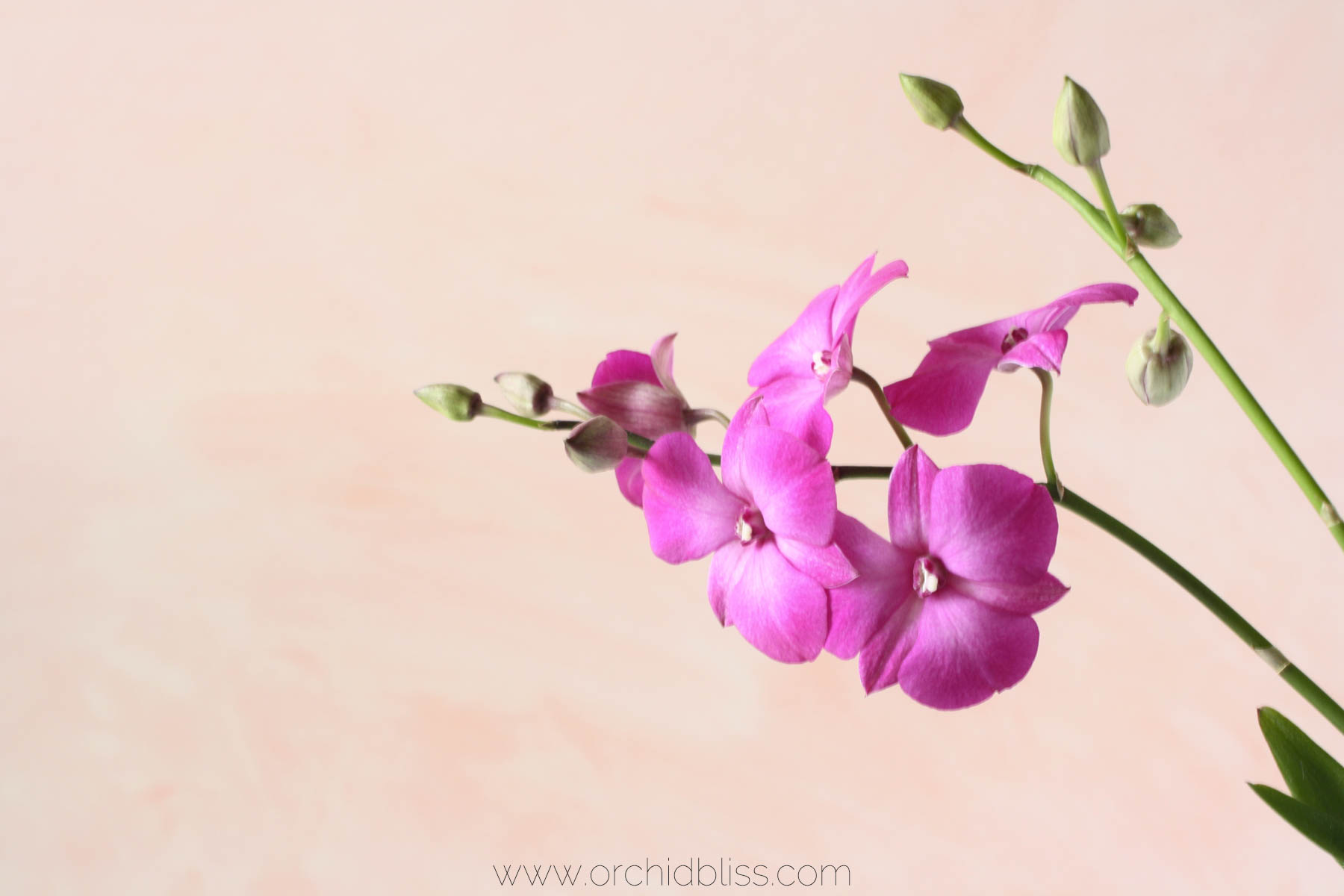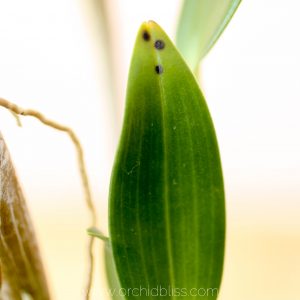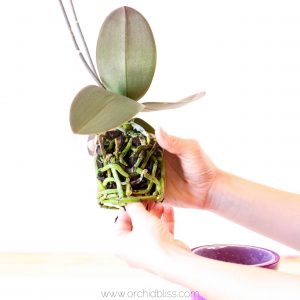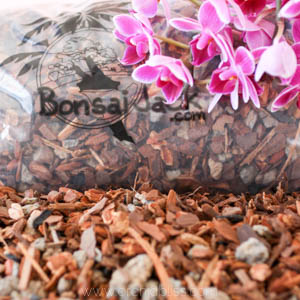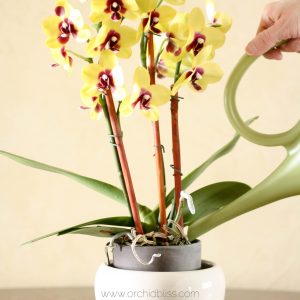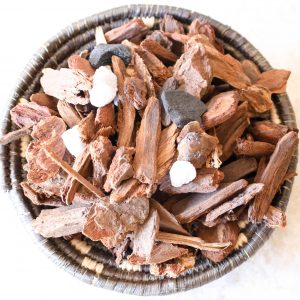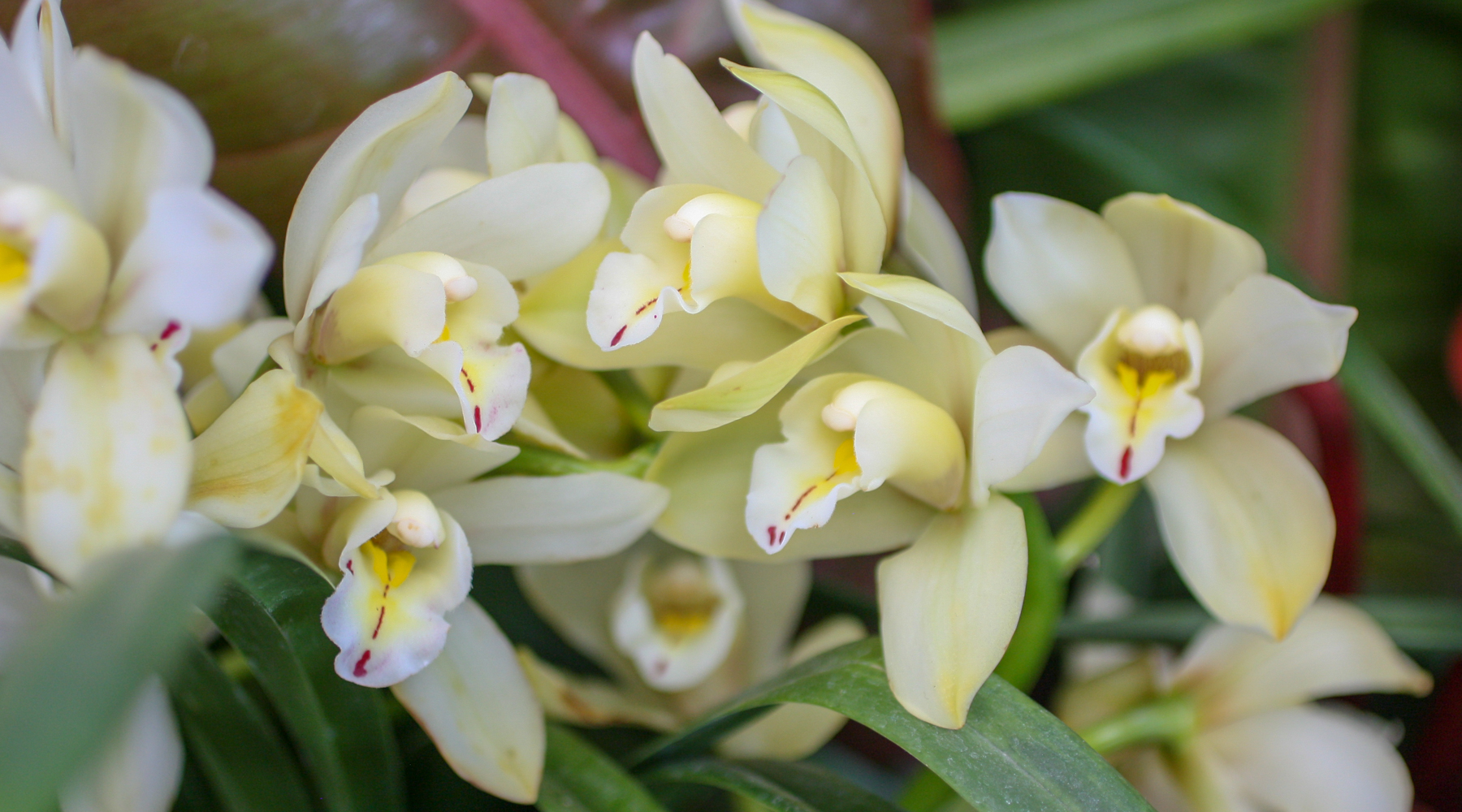
Spring Care for orchids
Spring is a time of renewal, cleaning up and cleaning out. Apply these same principles for healthy, vibrant orchids with this easy-to-follow Spring Care for Orchids Guide.
Spring care for orchids consists of just 6 simple practices that will make all the difference between healthy orchids and so-so orchids. In this article, you’ll:
- Discover how to spring clean your orchids so they will look their best.
- Learn simple secrets for an allover orchid health check. Nip pests and diseases in the bud before they become a problem.
- Find out what an orchid that’s ready for potting looks like. Hint: there are specific things to look for that signal it’s time to re-pot.
- Spring orchid care differs from winter orchid care. You need to do things differently now that your orchid will begin actively growing.
- Learn about winter-blooming orchids that will need particular attention.
- Get tips on how to train flower stalks to show off spring/summer blooming orchids.
- Get a bonus peek at my favorite dendrobiums that bloom winter-spring.
Click here to download your free Spring Care Checklist.
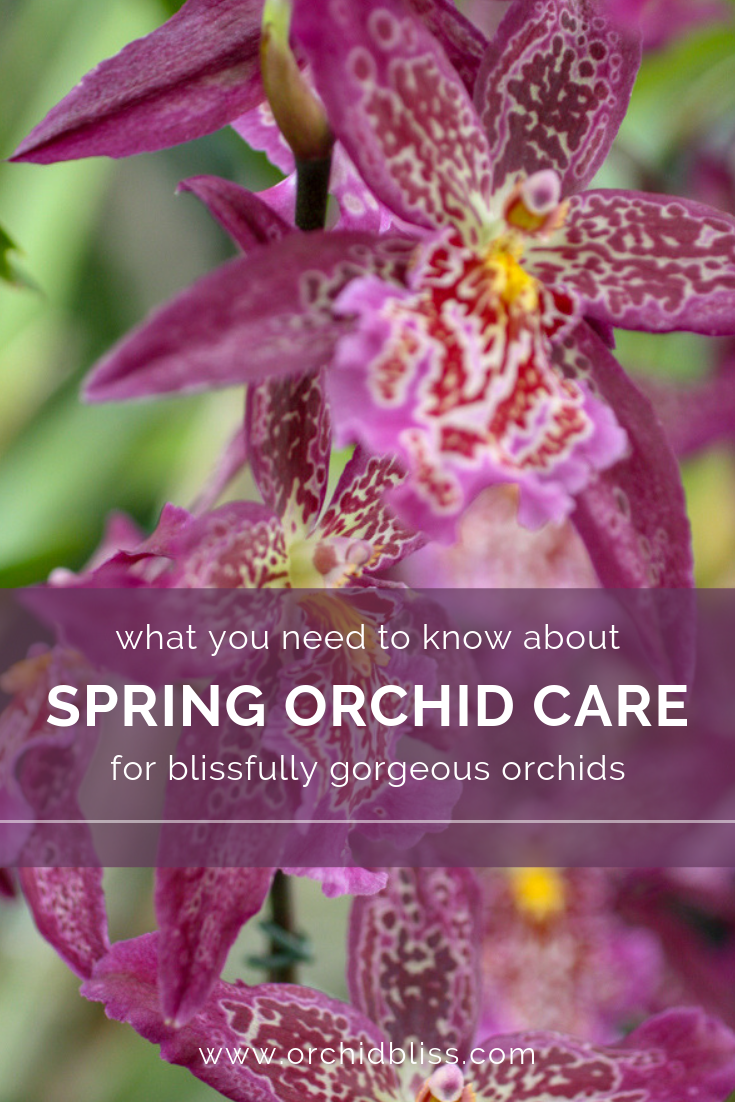
Some of the links on this page may be affiliate links. Click here to learn more.
Get Ready to Spruce Up Your Orchids
Spring cleaning isn’t just for closets and cupboards. Orchids benefit from regular cleanups as well. Not only will your orchids look better with withered leaves trimmed away and polished leaves, but tidying up the orchids will also take care of potential hiding places for pests to hide. This is also an excellent opportunity to check for pests and diseases.
Supplies Needed to Clean Orchids
- Diluted milk or lemon juice
- Soft cloth
- Sterilized pruning shears
- Torch for sterilizing shears
How to Clean Orchids
Gently wipe the leaves with diluted milk or lemon juice solution using a soft cloth. Clean up around pseudobulbs by removing old sheaths. Trim away shriveling leaves. Pluck away weeds and check potting media for decay. Keep an eye out for pests such as aphids, scale, and mealybugs. For more tips on treating pests and diseases, click here.
Do an overall health checklist:
Now that the orchid is all cleaned up, the orchid is ready to begin the orchid health checkup – and you’re the doctor.
- Root tips should be bright green or magenta. If the roots are black, the pot, especially if it is terracotta, may have absorbed excess fertilizer salts. Mushy, limp roots have been overwatered, while dry, brittle roots have been underwatered
- Leaves ought to be bright green and upright. Yellow leaves may signal overwatering or a nitrogen deficiency. Dying leaf tips may mean too much fertilizer or too much light. The orchid may be too close to the bulb if you use artificial light.
- Pseudobulbs provide water storage for the orchid. The newest pseudobulb should be plump, firm, and larger than older pseudobulbs until the orchid reaches maturity.
- Flowers should be checked for abnormal streaking and unusual color changes that may point to a virus.
- For more tips on how to tidy up your orchids, click here.
Click here to download your free Spring Care Checklist.
New Roots Signal That It’s Potting Time
During the orchid health check, you may have noticed new roots growing. This is an important observation because orchids recover best from potting if they are potted when new roots begin to emerge.
Before potting your orchid, check for new root growth. For orchids climbing out of their pots, this is a good time to divide your orchid to increase your collection or to share with a friend.
To divide sympodial orchids, check to make sure there are enough pseudobulbs to support at least two orchids. Keeping about 3 or 4 pseudobulbs together sever and pot the divisions.
Potting Emergencies – Even When You Don’t See New Root Growth
You may also have noticed that the potting media has begun to break down or that leaf tips have started to die. Broken down potting mix leads to compaction that deprives the roots of oxygen. Dying leaf tips indicate high salt build-up in the potting mix, which can quickly kill even a healthy orchid. In both of these situations, potting the orchid should happen right away. Obviously, potting before either of those scenarios is ideal.
If limp orchid leaves are a problem for your orchids, download my free cheat sheet on how to prevent limp leaves and rotten roots. Click here for the super helpful cheat sheet.
Spring Care for Orchids – Watch for Active Growth
As spring draws near, orchids begin putting out new leaves and roots. This is an important time to meet the increased nutritional needs of your orchids.
Meeting Your Orchids’ Increasing Water and Fertilizing Needs
Many orchids need less water and no fertilizer during the winter months. But now is the time to increase the watering frequency and begin fertilizing your orchids.
As temperatures rise, so does your orchids’ need for water. Both to the roots, by regular watering, and to the leaves, by water in the air – humidity. Be sure that you water (but don’t overwater) your orchids and that you provide about 50% humidity if growing orchids indoors.
Prepare Your Orchid to Bloom by Providing Adequate Light
Another important factor in growing healthy orchids is light. Light is important as plants convert light into energy. Good blooming depends on adequate light. And overall, plant health, including abundant flowers, is enhanced by judicious fertilizing.
Excellent Orchid Care = Large Pseudobulbs
Another consideration is pseudobulbs which grow on many sympodial orchids (slipper orchids being an exception). During this period of active growth, watch for the emergence of pseudobulbs. Fleshy full pseudobulbs, larger than last year’s pseudobulbs, are an excellent indicator of healthy orchids and new flowers to come.
Note: Phalaenopsis orchids are sympodial and do not produce pseudobulbs.
Winter Blooming Orchids to Keep Your Eye On
Winter bloomers such as Cymbidiums, Oncidiums, Zygopetalums, some Cattleyas, Dendrobium Nobile, and some Phalaenopsis orchids are in flower or are finishing up blooming. Soon these orchids will begin the active growth phase of the growth cycle by putting out new roots and leaves. As noted above, when orchids begin growing new roots, that is the ideal time to re-pot.
Spring/Summer Bloomers – Time to Train New Flower Stalks
Not all orchids are finishing up blooming. For orchids that bloom in the spring and summer, now is the time to begin training the flower stalks. To do this, stake the stalks so that the flowers will be shown off to their greatest advantage. It is important to stake the stalk when it first begins to grow, as the stalk will become more rigid and less pliable as time goes on. It is easy to snap a flower stalk if you wait too long.
For orchids that need staking, such as the phalaenopsis, train the flower stalk so that it will begin to arch at the first flower on the stalk.
The opposite is true for slipper orchids. Let the flower develop and bloom before staking. Otherwise, staking too soon may impede the development of the flower.
Overview: Spring Care for Orchids
As you clean up and clean out your orchids and prepare them for the coming year, your orchids will benefit from your attentive care.
Active growth is an important time as your orchid puts out new leaves, roots, and pseudobulbs – and prepares to flower. Also, staking flower stalks will help your orchids look their best.
See My Dendrobium Orchids that Bloom Winter to Spring
Here’s a peek at a few dendrobium orchids that have performed well for me throughout the winter and into spring. For happiness in a pot, check out these orchids.
From winter to spring, this dendrobium phalaenopsis, ‘classic gem’, just keeps popping out flower spikes.

This dendrobium nobile from Trader Joe’s has been a dependable bloomer. After purchasing, I immediately potted this orchid into a more suitable potting mix, and it rewarded me with clouds of flowers.
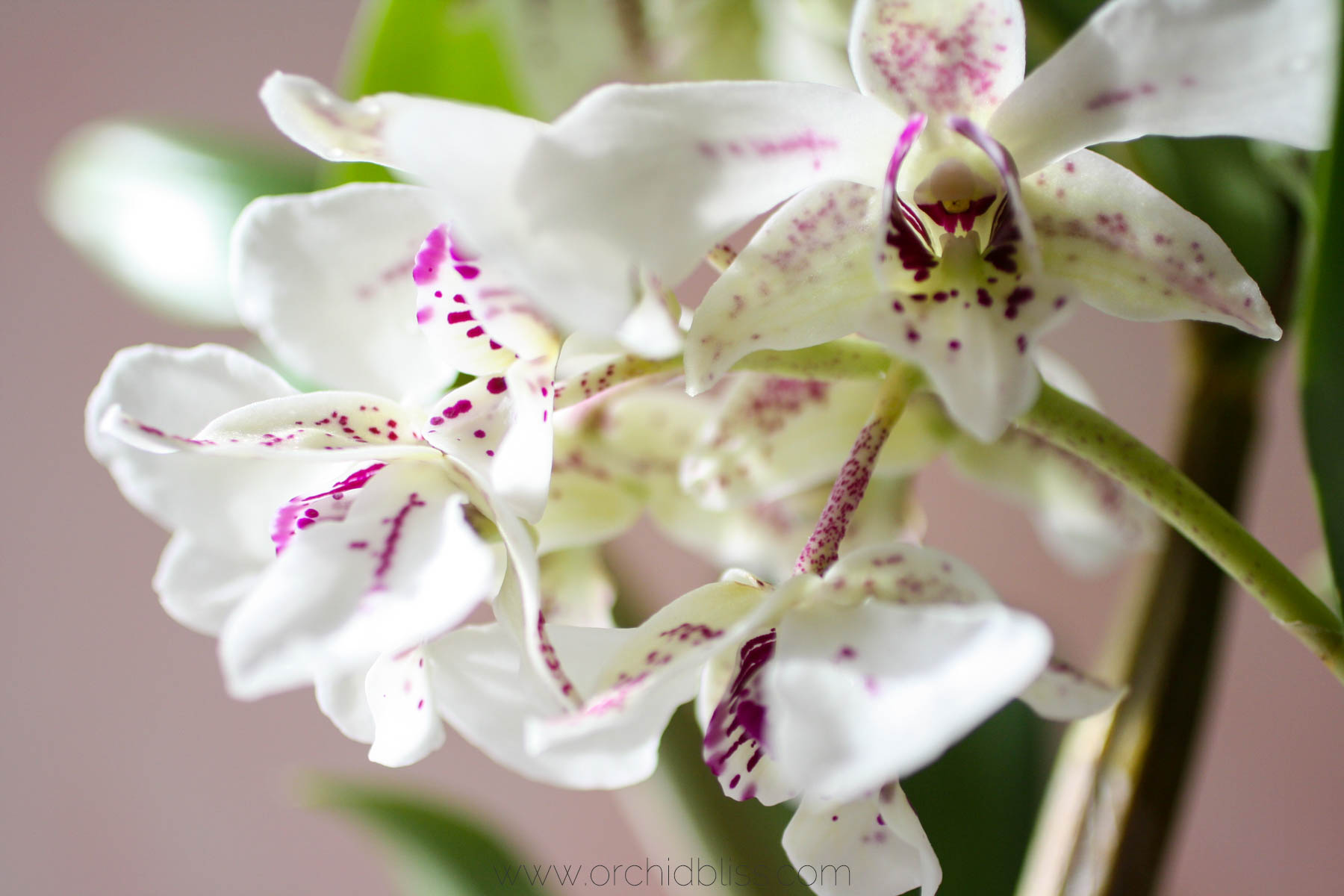
I LOVE this orchid, a Dendrobium hybrid Roy Tokunaga. I got this orchid when I first decided to branch out from growing phalaenopsis orchids. I’ve had it for many years, and it has consistently bloomed. This is a fantastic beginner orchid.
To help you further, start by downloading my free cheat sheet to see where to cut the orchid flower spike after blooms have faded to trigger re-blooming. Click here for the cheat sheet. It’ll be super helpful.
Related Articles
Got a Sick Orchid? How to prevent, identify & treat orchid pests and disease
How to prevent, identify & treat orchid pests and diseases
ReadEVERYTHING YOU NEED TO KNOW TO REPOT AN ORCHID
For optimum health, repot your orchid every 1-2 years. Come learn how.
ReadWatering Orchids: No More Guesswork
Learn how to water correctly and you'll avoid the #1 cause of orchid death
Read

